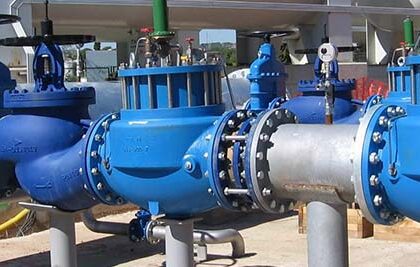Regulatory instruments can be used to compel homeowners and other businesses to undertake mandatory rainwater harvesting to address issues related to water scarcity and conservation. These instruments can include laws, ordinances, and regulations that set specific requirements for the collection and use of rainwater.
Rainwater harvesting and management technologies are closely regulated in many areas to ensure their safety and effectiveness, particularly in heavily urbanized environments where the natural percolation and infiltration of water has been disrupted by paved surfaces and dense infrastructure. These regulations aim to encourage the responsible use of rainwater technologies, such as temporary storage systems, to mitigate the risk of flooding in areas such as malls, shopping centers, and residential neighborhoods. By capturing and temporarily storing rainwater, these technologies help reduce the strain on traditional drainage systems and protect against the damaging effects of excess water.
Several different aspects of rainwater harvesting may be regulated, including the design and installation of the systems, the quality of the stored water, and the use of the water.
The importance of regulation cannot be understated when it comes to protecting public health. One crucial example is the prohibition of using rainwater harvested from asbestos cement rooftops for any human consumption. Asbestos is a known carcinogen and can be present in the water collected from these roofs, posing a serious health risk to individuals who consume it. By strictly regulating and prohibiting the use of such water, we can effectively protect individuals from the potential dangers of asbestos exposure and ensure that safe and clean water is available for all.
In terms of design and installation, regulations may specify the minimum standards for materials and construction, as well as requirements for maintenance and repair. These regulations are often put in place to ensure that the systems are safe and able to withstand the elements.
The quality of the stored water may also be regulated to protect public health. In some cases, regulations may require that rainwater harvesting systems be equipped with filtration or treatment systems to remove contaminants from the water. Additionally, regulations may specify limits on the amount of certain substances that can be present in the stored water.
Many countries and states world over have in place some form of rainwater harvesting.
One example of such a regulatory instrument is the California Water Conservation Act, which requires all new residential, commercial, and industrial developments to include rainwater harvesting systems as a means of conserving water and protecting the state’s water resources. This law applies to both new construction and major renovations and requires that rainwater harvesting systems be designed to capture and store a certain amount of rainwater based on the size of the property and the type of development.
Another example of a regulatory instrument that promotes rainwater harvesting is the Water Conservation Ordinance in the city of Austin, Texas. This ordinance requires all commercial and multi-family residential properties to install rainwater harvesting systems that are capable of capturing and storing at least half of the annual rainfall for on-site use. The ordinance also provides incentives for businesses and property owners who go above and beyond the minimum requirements, such as rebates and reduced water rates.
Here in Uganda, rainwater harvesting is regulated by the Water Act of 2002 and the National Water and Sewerage Corporation Act of 2002. These acts provide guidelines for the collection, storage, and use of rainwater, as well as the construction and maintenance of rainwater harvesting systems.
Under the Water Act, individuals, and institutions are permitted to collect and use rainwater for domestic and non-domestic purposes, as long as it does not interfere with the rights of others to access water. However, any rainwater harvesting system that is intended for commercial use must be approved by the National Water and Sewerage Corporation (NWSC).
The NWSC Act also requires that all rainwater harvesting systems be properly designed, constructed, and maintained to ensure their safety and effectiveness. It is the responsibility of the owner or operator of the system to ensure that it meets these standards.
In addition to these regulations, the Uganda Water and Sanitation Sector Development Plan (2012-2022) also promotes the use of rainwater harvesting as a means of improving water security in Uganda. It recommends the development of policies and programs to encourage the adoption of rainwater harvesting systems, particularly in areas where access to safe and reliable water is limited.
In line with the current drive to ensure water security, the Ugandan regulation needs serious review to cure the problem of the unnecessary monopoly of the NWSC as a guarantor of rights to undertake rainwater harvesting, while there is a need for city-specific ordinances meant to compel those who undertake large surface area constructions encompassing both buildings and paved surfaces to undertake mandatory rainwater harvesting, which ultimately will go a long way in managing excess stormwater that would otherwise have percolated and infiltrated from overburdening the drainage systems.
Overall, the use of regulatory instruments to compel homeowners and other businesses to undertake mandatory rainwater harvesting can be an effective way to promote water conservation and address issues related to water scarcity. By setting specific requirements and providing incentives for compliance, these instruments can encourage the widespread adoption of rainwater harvesting practices, which can ultimately help to preserve and protect our water resources for future generations.











